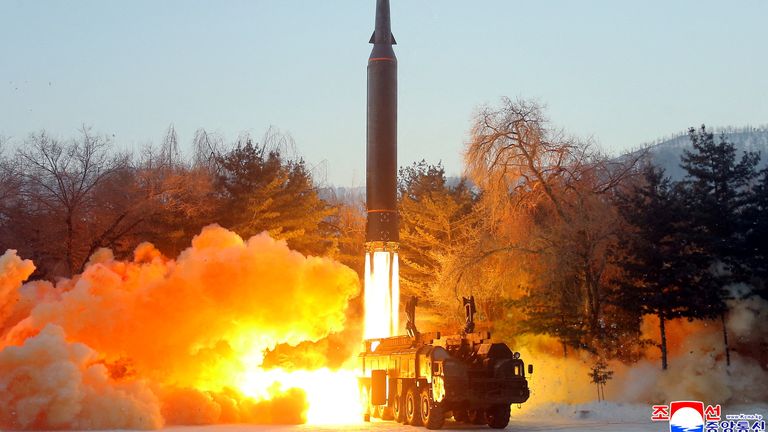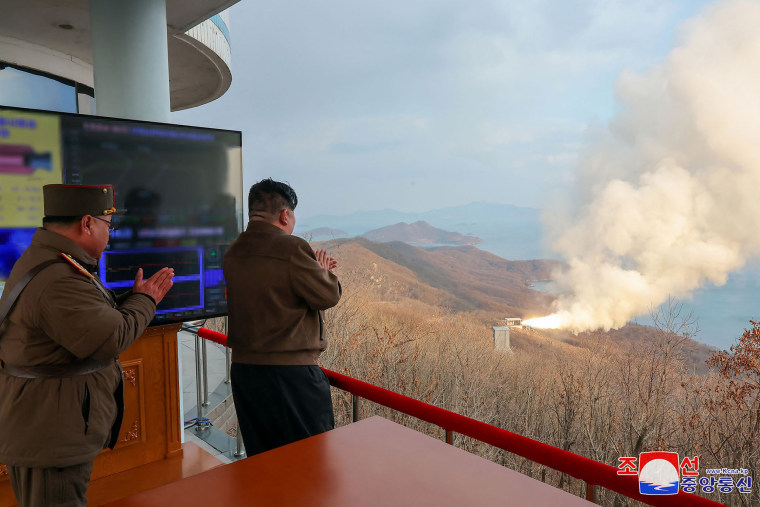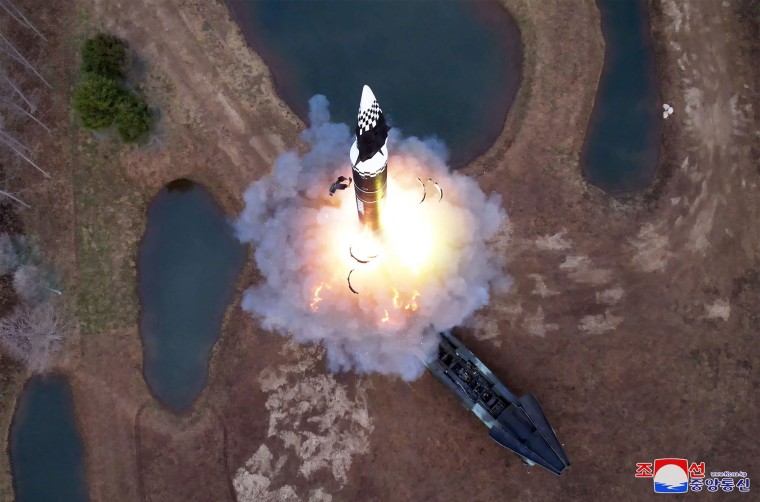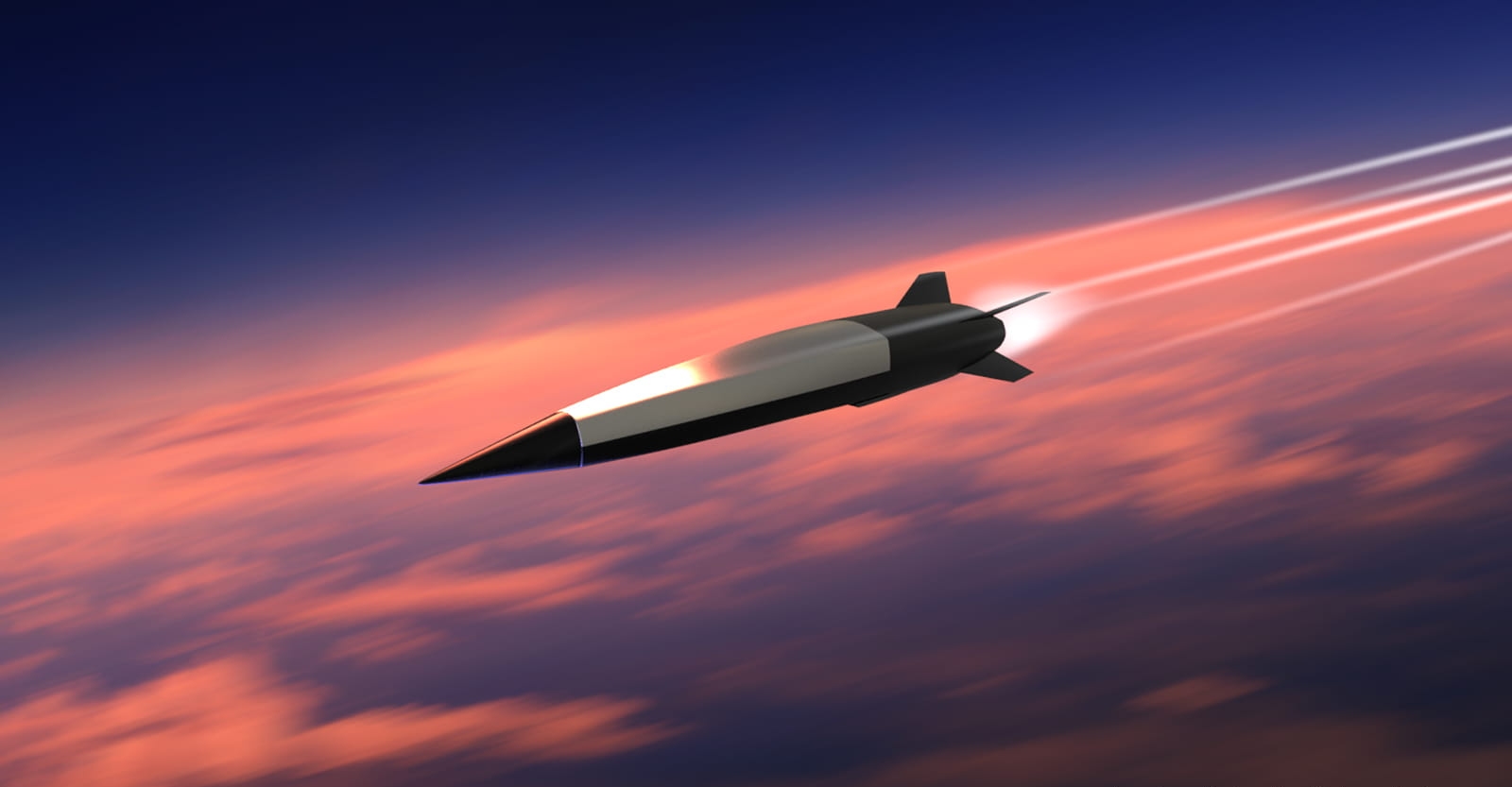North Korea, Kim Jong Un’s Latest Test Of New Hypersonic Weapon; The Quest For Hypersonic Missiles, A Dangerous Territory
North Korea's recent announcement of testing a new solid-fuelled hypersonic intermediate-range missile (IRBM) indicates its ongoing efforts to expand its weapons program. The move, reported by the state-run Korean Central News Agency (KCNA), comes amidst heightened tensions in the region and follows a missile launch detected by South Korea and Japan. Meanwhile, Japan and the United States have joined forces to develop an innovative missile interception system in response to the escalating arms race driven by advancements in hypersonic missile technology. Hypersonic weapons, pursued by major players such as China, North Korea, and Russia, are characterized by their exceptional speed and maneuverability, posing significant challenges for interception. However, there is a growing global concern over the proliferation of hypersonic capabilities and their implications.

North Korea announced the testing of a fresh solid-fuelled hypersonic intermediate-range missile (IRBM) as part of its ongoing weapons program expansion.
The revelation was made in a report by the state-run Korean Central News Agency (KCNA) on Wednesday. The announcement followed the detection by South Korea and Japan of a missile launch from North Korea towards the east, as reported the previous day.
KCNA released images featuring leader Kim Jong Un at the site alongside the new weapon, identified as the Hwasong-16B, accompanied by his military commanders.
The event occurred less than a fortnight after Kim supervised a solid-fuel engine test for an IRBM. Kim praised the missile as a testament to North Korea’s “absolute superiority” in defense technology.
According to KCNA, Pyongyang has developed nuclear-capable solid-fuel systems for a range of tactical, operational, and strategic missiles.

The North Korean leader pledged to further enhance the country’s arsenal to deter “enemies,” referring to Japan, South Korea, and the United States.
The Hwasong-16B reportedly flew approximately 1,000km (621 miles) with a peak altitude of 101km (62 miles). South Korea’s military reported its flight distance at about 600km (370 miles), terminating in the sea between South Korea and Japan.
The ‘Strategic Move’
North Korea has prioritized the development of sophisticated solid-fuel weapons due to their ease of concealment, mobility, and quicker launch capabilities compared to liquid-propelled counterparts.
Hypersonic weapons, which exceed five times the speed of sound and offer maneuverability during flight, are also part of North Korea’s focus. The country had previously claimed a hypersonic IRBM test in January.
According to Han Kwon-hee of the Korea Association of Defence Industry Studies, the Tuesday launch seems to align with Pyongyang’s missile development strategy, particularly regarding hypersonic weapons.
Analysts suggest that perfected hypersonic weapons could potentially reach remote US targets in the Pacific, including Guam.
The heightened tensions in the region since 2022, aggravated by Kim’s strategic maneuvers amidst Russia’s invasion of Ukraine, prompted responses from the US and South Korea.
They have expanded joint training and drills, involving Japan, to sharpen deterrence strategies.

Hypersonic Missiles – Game Changers
The significance of hypersonic missiles has prompted major global powers to invest substantial resources in gaining a strategic edge.
This has initiated a new arms race, with China, Russia, and the United States aggressively pursuing the development and deployment of advanced hypersonic weapons.
Simultaneously, other nations are either initiating or expanding their own hypersonic missile programs. These advanced weapons, characterized by their exceptional speed, maneuverability, and extended ranges, pose significant challenges to global security.
The Arms Race
The current arms race has spurred collaboration between Japan and the United States, aiming to develop an innovative missile system tailored for intercepting hypersonic weapons. These hypersonic missiles, often heralded as “game changers,” are actively being developed by China, North Korea, and Russia.
Hypersonic cruise missiles (HCM) and hypersonic glide vehicles (HGV) can achieve staggering speeds exceeding Mach 5, five times faster than the speed of sound. Their ability to execute unpredictable maneuvers presents formidable challenges for interception.
Numerous nations, Japan included, are investing efforts in hypersonic weaponry research and development.
However, China leads the global forefront with its technological advancements in this domain.
Understanding the nature of manoeuvrable hypersonic missiles and the significant concerns surrounding their potential deployment is important.
These missiles boast potent engines capable of reaching speeds ranging from 5 to 6 times the speed of sound.
There’s speculation that Russia may have overcome key challenges related to managing extreme heat during flight, ensuring engine durability under such conditions, and effectively controlling navigation issues.
The progress potentially enables the development of hypersonic missiles reaching staggering speeds of Mach 10; coupled with their remarkable range and maneuverability, hypersonic missiles offer unprecedented capabilities.
Unlike ballistic missiles with fixed trajectories, hypersonic missiles can adjust their course mid-flight, enhancing precision and complicating interception efforts. Moreover, their capacity to carry nuclear warheads heightens apprehensions regarding their deployment.

Leading Nations in Hypersonic Missile Advancement
The significance of hypersonic missiles has spurred major global powers, often termed superpowers, to commit significant resources towards their development and the creation of corresponding defense mechanisms.
Among these superpowers, the United States, Russia, and China stand out as frontrunners in the race for hypersonic technology, each pursuing distinct avenues of development and strategic goals.
United States
As early as 2000, the United States initiated exploration into hypersonic missile technology, focusing initially on attack scenarios. However, progress faced setbacks in 2013 and 2014 due to challenges presented by Congress.
The need to accelerate research and development became evident as Russia and China made rapid strides in this field.
Thus, in June 2019, the United States unveiled the AGM-183A ARRW hypersonic glide missile, showcased under the wing of a B-52 bomber, with estimated speeds reaching 6,200 km/h.
Despite technical hurdles in operational deployment, substantial investments were allocated towards hypersonic technology research and development, amounting to approximately $3.3 billion in 2019 and an additional $2.6 billion in 2020.
The budget for hypersonic weapon development from 2020 to 2025 was doubled to $11.2 billion from an initial $6 billion projection. Leading entities such as DARPA, the U.S. Army, and the U.S. Air Force are spearheading efforts, collaborating with industry consortiums to produce a diverse array of hypersonic missiles.
These include low-range hypersonic weapons (LRHW) for long-range strikes, tactical and strategic targets, air-breathing hypersonic missiles, tactical boost glide missiles (TBG), and hypersonic air-breathing cruise missile systems tailored for various platforms like the F-15EX fighter aircraft and ground-based installations.
Furthermore, the U.S. Navy has committed $2.5 billion to Lockheed Martin for hypersonic missile development. Collaboration with Australia’s Hypersonix has led to advanced “breathing” missile prototypes utilizing unique ramjet engines capable of reaching speeds up to Mach 7, or around 8,400 km/h.
These engines, manufactured using 3D printing technology, aim to reduce production time and costs. Specialized metals and advanced coatings are employed to withstand the extreme temperatures generated during engine operation, crucial for precise trajectory control.

Russia
Russia has emerged as a trailblazer in hypersonic missile development, surpassing initial projections from other nations. Demonstrated prominently during the conflict in Ukraine, Russian hypersonic missiles showcased their superiority over conventional cruise missiles.
One such missile, the Kinzhal, launched from a MiG-31 fighter aircraft, has been lauded by President Vladimir Putin for purportedly reaching speeds of around 12,000 km/h (though disputed by experts), with a range exceeding 1,250 km (possibly 2,000 km according to Russian sources). Its exceptional speed and agility present considerable challenges for detection and interception.
Additionally, Russia unveiled the 3M22 Zircon, a hypersonic missile designed for naval targets, boasting speeds of Mach 8 and a range of 400 km. Operable from a TU-22 bomber or a missile ship, it showcases Russia’s prowess in hypersonic technology.
Another milestone is the Avangard, a glide vehicle launched from a ballistic missile, operational since 2018, with a range of approximately 6,000 km.
China
China embarked on an ambitious hypersonic weapon program in the early 21st century, achieving operational status as early as 2014.
Its strategic focus involves developing various hypersonic technologies, including glide missiles and HAWC missiles, aimed at challenging U.S. military assets in the Pacific.
The Dong Feng 17 (DF-17), one of China’s medium-range hypersonic glide vehicles, boasts speeds between Mach 8 and 12 and a range of 1,800-2,000 km. Its unique cross-sectional shape optimizes aerodynamic performance and maneuverability.
China has also unveiled the DF-ZF missile, a glide vehicle with nuclear capabilities, and the DF-41 intercontinental ballistic missile, capable of carrying hypersonic glide vehicles over 14,000 km.
Furthermore, China is developing the Starry Sky-2, slated for operational deployment by 2025. In a notable display of prowess, China launched a hypersonic missile in July 2021 on a circular trajectory around Earth, showcasing precision and versatility.
Despite potential gaps compared to the U.S., China is bridging them through extensive research and development efforts.

Iran’s Hypersonic Aspirations
Russia’s strides in hypersonic technology and its military ties with Iran raise concerns about Iran’s potential acquisition of such missiles.
Recent statements from Iranian officials suggest that Iran’s pursuit of hypersonic technologies has made substantial progress since 2014.
The Last Bit, Undoubtedly, hypersonic missiles represent a paradigm shift in contemporary warfare. Their unmatched velocity, agility, accuracy, extensive reach, and strategic significance render them a formidable asset for national security and defense.
With continuous advancements and proliferation, these missiles are fundamentally altering perceptions of military strategy, deterrence, and power projection among nations.
Hypersonic missiles are emerging as indispensable elements of a nation’s defense inventory in a global arena characterised by escalating complexities and uncertainties.
However, the fact is that these missiles are lethal and, if used, can have devastating effects on the already precarious situation related to climate change!




